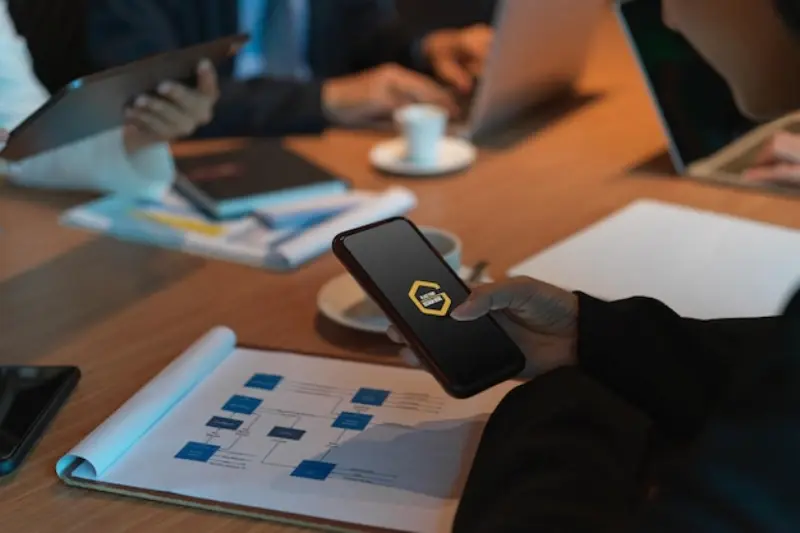A major retail chain launches their new shopping app across Europe, collecting customer data from millions of users. Everything seems perfect until they receive a €20 million fine for GDPR violations—they were storing personal data without proper consent and had no clear process for users to delete their information. This isn't some far-fetched nightmare scenario; it's exactly what happens when enterprise apps ignore data protection regulations.
If you're developing or managing enterprise mobile applications that handle European user data, GDPR compliance isn't optional—it's the law. The General Data Protection Regulation affects any business that processes personal information from EU residents, regardless of where your company is based. Miss the mark here and you could face fines of up to 4% of your annual global revenue or €20 million, whichever is higher.
GDPR compliance is not just about avoiding fines—it's about building trust with your users and creating sustainable business practices that respect privacy rights.
Here's the thing though: GDPR doesn't have to be the complex, overwhelming beast that many people make it out to be. Yes, there are technical requirements and legal considerations, but with the right approach, you can build enterprise apps that not only meet compliance standards but actually benefit from better data practices. Throughout this guide, we'll break down the practical steps you need to take—from understanding the basic principles to implementing real solutions in your mobile applications. No legal jargon, no unnecessary complexity, just straightforward advice from our years of building compliant enterprise apps.
Understanding GDPR Basics
Right, let's get straight to the point—GDPR stands for General Data Protection Regulation. It's a European law that came into effect back in 2018, and it completely changed how businesses handle personal data. Think of it as a rulebook that tells companies what they can and cannot do with people's information.
The regulation applies to any organisation that processes personal data of EU residents, regardless of where the company is based. So if you're building an enterprise app that might be used by someone in Germany, France, or any other EU country, GDPR applies to you. No getting around it, I'm afraid.
What Counts as Personal Data
Personal data under GDPR is broader than you might think. We're talking about names, email addresses, phone numbers—the obvious stuff. But it also includes IP addresses, device identifiers, location data, and even photos. Basically, if you can use it to identify someone (directly or indirectly), it's personal data.
Key Rights for Data Subjects
GDPR gives people six main rights over their data: the right to be informed about how their data is used; the right to access their data; the right to correct inaccurate information; the right to delete their data (the famous "right to be forgotten"); the right to restrict how their data is processed; and the right to move their data to another service.
For enterprise apps, this means building systems that can handle these requests efficiently. Users need clear information about what data you collect and why—no hiding behind complicated legal jargon that nobody understands.
Common Compliance Challenges in Enterprise Apps
Let me be honest with you—GDPR compliance for enterprise apps isn't straightforward. After working on countless mobile projects, I've seen the same challenges pop up time and time again. The biggest headache? Data mapping. Most organisations genuinely don't know where their personal data lives, how it flows through their systems, or who has access to it.
Third-party integrations create another layer of complexity. Your app might connect to analytics tools, payment processors, or cloud storage services—each with their own data handling practices. When something goes wrong, you're still responsible under GDPR, even if the problem started with a third party.
The Most Frequent Problem Areas
User consent mechanisms cause endless confusion. It's not enough to have a simple "I agree" checkbox anymore. You need granular consent options, clear withdrawal processes, and proper documentation of what users agreed to and when.
- Inadequate data retention policies—keeping information longer than necessary
- Poor access controls allowing too many people to view personal data
- Missing or incomplete privacy impact assessments
- Weak data breach response procedures
- Cross-border data transfers without proper safeguards
Start with a comprehensive data audit before building your app. Map every piece of personal data your app will collect, process, store, and share. This foundation makes everything else much easier.
Mobile apps face unique challenges too. Device permissions, local data storage, and offline functionality all add complications. Users expect apps to work smoothly, but GDPR requires transparency about data processing that can feel intrusive if not handled carefully.
Data Protection Best Practices
Getting data protection right isn't just about ticking boxes—it's about building trust with your users and protecting your business from hefty fines. I've seen too many companies treat GDPR as an afterthought, only to scramble when they realise how exposed they are.
The foundation of good data protection starts with understanding what personal data you actually collect. Many apps gather far more information than they need, which creates unnecessary risk. Start by auditing your data collection practices and ask yourself: do we really need this information to deliver our service? If the answer is no, stop collecting it.
Core Protection Principles
Data minimisation should be your guiding principle. Collect only what you need, keep it only as long as necessary, and delete it when you're done. This approach reduces your compliance burden and limits potential damage if something goes wrong.
Encryption is non-negotiable for enterprise apps. Data should be encrypted both in transit and at rest—this means using HTTPS for all communications and encrypting your databases. Many developers assume their cloud provider handles this automatically, but that's not always the case.
Access Controls and User Rights
Implement proper access controls within your organisation. Not everyone needs access to personal data, and those who do should only see what's relevant to their role. Use role-based permissions and regularly review who has access to what.
Your users have specific rights under GDPR that your app must support:
- Right to access their personal data
- Right to correct inaccurate information
- Right to delete their data (right to be forgotten)
- Right to data portability
- Right to restrict processing
Building these capabilities into your app from the start is much easier than retrofitting them later. Design your data architecture with these rights in mind, and you'll save yourself significant headaches down the road.
Implementation Strategies for Mobile Apps
Getting GDPR compliance right in your enterprise mobile app isn't just about ticking boxes—it's about building these protections into the very fabric of your application. I've worked on countless enterprise projects where compliance was treated as an afterthought, and trust me, that approach never ends well.
The smart way to handle mobile app GDPR is through what we call "privacy by design." This means thinking about data protection from the very first line of code you write. Start with a comprehensive data audit—map out exactly what personal data your app collects, where it goes, and who has access to it. You'd be surprised how many apps collect way more information than they actually need.
Technical Implementation Approach
Your development team needs to focus on three core areas. First, implement robust consent management systems that actually work on mobile interfaces—those tiny consent forms that nobody can read don't cut it anymore. Second, build proper data encryption protocols for both data at rest and in transit. Third, create automated data deletion processes because manual compliance management becomes impossible at enterprise scale.
The biggest mistake companies make is treating GDPR compliance as a one-time setup rather than an ongoing process that needs constant attention and updates
Testing and Monitoring
Once your compliance features are built, you need proper testing protocols. Set up automated monitoring for data flows and user consent tracking. Regular compliance audits should be scheduled into your development cycle—not just when something goes wrong. Remember, GDPR isn't static; regulations evolve and your mobile app needs to evolve with them.
Conclusion
Getting GDPR compliance right for your enterprise app isn't just about ticking boxes—it's about building trust with your users and protecting your business from potentially devastating fines. I've worked with countless companies over the years, and the ones that get this right early on always sleep better at night than those scrambling to fix things after launch.
The good news is that GDPR compliance doesn't have to be overwhelming. Start with the basics: understand what data you're collecting, why you need it, and how you're storing it. Build privacy by design into your app from day one rather than trying to bolt it on later. Trust me, retrofitting privacy features is like trying to change the tyres on a moving car—technically possible but unnecessarily painful.
Your users will thank you for being transparent about how their data is used. Clear privacy notices, easy-to-find consent mechanisms, and simple data deletion processes aren't just legal requirements—they're good business practice. People are more likely to trust apps that respect their privacy, and trust translates into better user retention and positive reviews.
Don't forget that compliance is an ongoing process, not a one-time achievement. Data protection laws evolve, your app will grow and change, and new features might introduce new privacy considerations. Regular audits and staying up-to-date with regulatory changes will keep you on the right side of the law.
If you're feeling overwhelmed by all of this, remember that you don't have to go it alone. Working with experienced app developers who understand privacy requirements can save you time, money, and stress down the road.
Share this
Subscribe To Our Blog
You May Also Like
These Related Stories

Why Enterprise Security Audits Miss Mobile App Threats

Enterprise App Security Threats Your Business Can't Ignore





